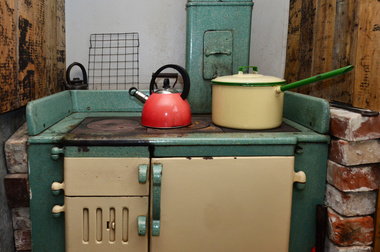
Replacing a Fridge – At Least $800 New
Fixing an older fridge typically costs between one and a few hundred dollars. Older models with the freezer box on top are the cheapest, but most people opt for the side-by-side freezer box combination nowadays.
Box-top refrigerators will cost you around $800 to $900 on the low end, and up to over $8,000 for WiFi-enabled and over-sized models. The average fridge today costs around $1,500.
Replacing a Stove – At Least $500 New
Replacing your oven can get a little more complicated than replacing a refrigerator. There are so many different options for oven ranges and stove top combinations. First, modern stoves in high-end homes have trended toward the stainless-steel variety that gives a contemporary look to home interiors.
But there are so many more possibilities. Some ovens come separate from the stove top and grill. Burners vary from the old-school grated burners to flat, gourmet-style grill tops. You can buy double ovens and over-sized grills and even WiFi-enabled ovens that work with a smartphone.
For standard ovens with none of the bells and whistles, expect to pay a minimum of $500 if you can get a good deal. For a high-end, top-of-the-line stove and oven, expect to pay upwards of $2,000 or $4,000, on average.
Replacing a Dishwasher – At Least $600 New
Dishwashers don't typically last as long as other major appliances and therefore can be replaced for around $250 to $600 dollars, on average. Even the more expensive stainless steel versions with WiFi-enabled technology will only run you around $1,000.
Replacing a Washer-Dryer – At Least $1,000 New
Lastly, your washer and dryer may need replacing one at a time. It could be that your dryer conks out before your washer, and vice versa. Repairs typically cost a few hundred dollars for either.
To replace an old-fashioned, top-loading washer will cost anywhere from $350 to around $500. For the more modern and efficient front-loading washer, expect to pay between $1,000 and $1,500 just for the washer. Newer models also come with high-tech features that can push costs up even higher.
Dryers are about the same price to replace as washers, with nearly as many options. An older model costs under $500, but fancier, trendy dryers can cost over $1,000.
The trick is to replace items before they completely die and then force you to buy something new quickly. Plan in advance and keep an eye open for sales. If you make a purchase when it's not urgent, you have a better chance of spending less than you expected.